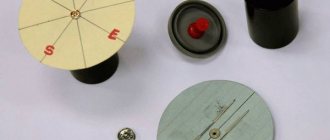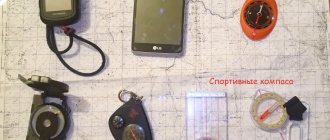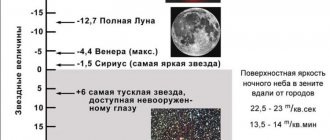The compass is considered one of the most ancient devices that helped people navigate the terrain. The history of its creation is studied at school. But if you try to find the very first mentions of a magnetic compass, you can only come across fragments of stories from which it is difficult to understand who exactly became the creator of this invention.
India, Greece and China are competing for the title of being the first country where a compass appeared. In each of them, ancient records were found about the use of this device, but it is very difficult to determine its exact time of appearance in each of the states. Scientists also do not exclude the possibility that they are mistaken, so they are constantly searching for any information in the rest of the world.
Magnetic compass
In everyday life, people almost never use a magnetic compass, but for sailors and travelers it is an indispensable thing that can save a life if a person gets lost and does not remember the way home. Ordinary compasses consist of a plastic box (or a round brass box) and a needle. Usually it is made of steel. In the center there is a small piece of stone - agate. It is necessary to reduce friction between the arrow and the tip of the spire.
History of creation
Some historians are sure that the man who invented the compass lived in China. It is believed that it was originally planned to be used only on land, and was not suitable for sea travel. But in those days the device was not much like a modern compass. It looked more like a spoon lying on a polished slab. The handle of this spoon was made of magnetite. It rotated freely, and there was only one arrow and it pointed only to the south.
In the 6th century AD, the compass changed and became similar to the modern one, with a rotating arrow. Soon the invention reached the Arab countries. Local sailors really liked it, so they began to use it very often to find the right path on a long sea voyage.
Note! 200 years later, a similar device appeared in the European part of the world. Around the same time, the compass was improved, which virtually eliminates the possibility of getting lost. The magnetic needle was secured with a pin to the bottom of the compass bowl or its paper base.
Soon the device fell into the hands of the Italian Flavio Gioia. He studied a brief history of the compass and improved it by installing a round coil with sixteen diamonds. Later there were 2 times more divisions. In the 18th century, the compass began to look like a complex device, designed not only to indicate the cardinal directions, but also to show the time.
On what principle do compasses work?
The compass is able to determine the cardinal directions due to the interaction of its two magnets and magnetic poles. The device is equipped with a freely rotating pointer. One end of it constantly points to the north pole, and the other to the south.
William Gilbert was the first to suggest that the planet has magnetic poles. He described this phenomenon in his book “On the Magnet.” In his story, Gilbert concludes that our planet is a huge magnet. After some time, researchers discovered magnetic poles (these are areas where the magnetic needle becomes vertical). This discovery was attributed to John Ross (English explorer).
Further spread of the compass
From the Chinese the compass came to the Arabs. The Arabs were good sailors; they needed navigational aids, so they liked the idea of a compass. The 13th century Arabic compass was a magnetized object that was dipped into a container of water. The minimum frictional force allowed the object to move freely, turning in one of the cardinal directions. In this form, the prototype of the modern compass came to the Europeans.
European navigators needed a navigation device, and they quickly improved the Arabian device. The inventor of the European compass, which not only indicates the north-south direction, but allows you to more accurately navigate to the cardinal points, is the Italian Flavio Gioia. He divided the compass dial into 16 divisions.
In addition, Gioia finally installed the arrow on a thin pin (this idea had previously been used in some models of compasses), and to reduce the friction force in the axis, he poured water into the bowl. This happened in the 14th century. Since then, the design of the compass has undergone significant changes, but Joya's design is used in all modern magnetic compasses to this day.
Compass of ancient countries
At the moment, scientists cannot say exactly in which ancient country the inventors invented the compass. But they all propose three states for consideration: Greece, China and India. This is partly due to the fact that the invention was invented a very long time ago, so no evidence has survived to this day, after studying which we can draw a final conclusion.
First Chinese compass
Some researchers involved in the history of the invention of the compass believe that the phenomenon of magnetism was first noticed and discovered by the Greeks. But at the same time, we cannot discard another point of view, which gives the authorship of the discovery to the ancient Chinese inventors. Scientists who claim that the Chinese invented the device refer to ancient writings found here. Moreover, based on the same chronicles, magnetite was also discovered in China one thousand years earlier.
The writings also mention that the Chinese ruler Huang Di during the war used a device similar in function to a compass. Another version says that the device resembled a chariot on which a magnetic figurine of a man was installed, pointing to the southern direction. This chariot could be mounted on any ancient vehicle.
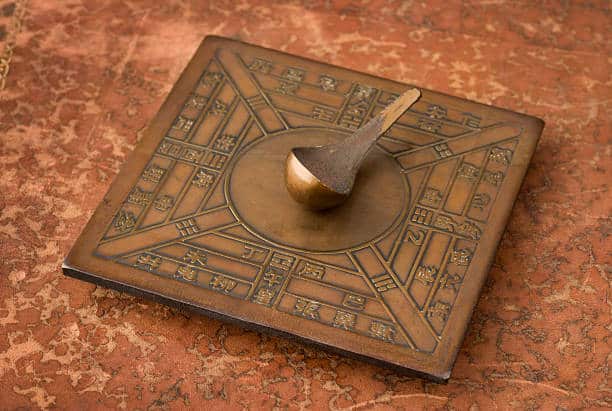
It was connected to the wheels in such a way that the gear mechanism located inside the invention rotated in the opposite direction while the cart was turning. This is necessary so that the indicator mounted on the chariot can always show the correct direction, regardless of where the vehicle is moving.
In order for this device to always work correctly, it is very important to set the pointer in the right direction even before the chariot sets off on its first journey, otherwise the little man will point in the wrong direction. As for the first compass in the form of a flat board and a spoon lying on it, it was used by magicians to predict the future, since the movement of the arrow was explained by the influence of otherworldly forces.
The compass was used for rituals only until the 2nd millennium BC. According to other versions, the magnetic properties of the device were used in the 4th millennium BC during Feng Shui rituals. At that time, the phenomenon of magnetism was explained as a magical manifestation of higher powers. Only 100 years later, Chinese sailors began to use the compass for its intended purpose and took it on long sea voyages.
Compass in India
Some researchers believe that the compass first appeared in India, or that local inventors created it around the same time as the Chinese, but without their intervention or prompting. Based on the brief history of the creation of a compass in India, the inventors were prompted to discover it by a mountain located near the Indus River. Over time, local residents began to notice that she was able to inexplicably attract small metal objects to herself.
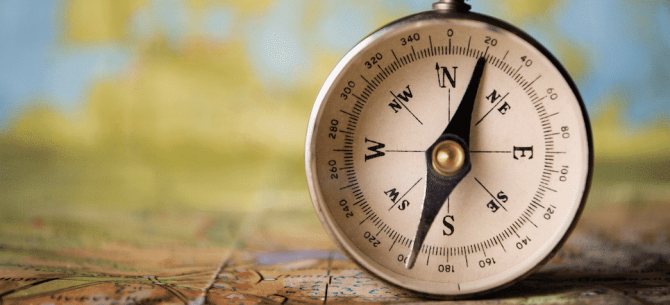
Soon the magnetic properties of the rock began to be used in Indian medicine. One of the local doctors began to use a magnet during surgical operations. Like the Chinese, the Indians used a compass when going to sea. They decided not to invent anything new and made a magnetized arrow in the shape of a fish. Her head constantly pointed south.
Compass and Ancient Greece
Ancient Greece, like the previous two countries, did not lag behind in the scientific field. The Greeks, independently of other scientists, independently discovered and studied the phenomenon of magnetism, and then created their first compass.
In the 7th–6th centuries BC, the ancient Greeks, namely Thales of Miletus, discovered that magnetite, known for several centuries, was capable of attracting iron.
This phenomenon was explained in different ways: some believed that magnetite has a soul that is drawn to iron, others - that iron has moisture, which in turn is absorbed by the magnet. But, as we understand, such explanations were still very far from the truth.
Later, Socrates discovered the phenomenon of magnetization of iron attracted to a magnet. And some time later it was discovered that magnets can not only attract, but also repel.
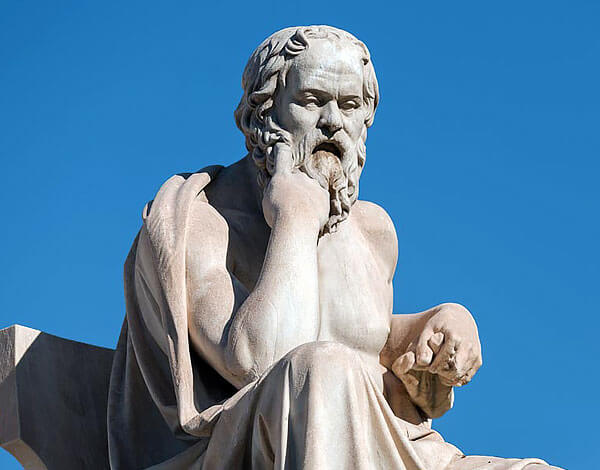
It is thanks to the discovery of Socrates that not only compasses, but also a huge number of other instruments work today.
Thus, all the facets of magnetism were gradually revealed, which later made it possible to reveal its nature. But at this stage it was too early to talk about something like a compass.
Operating principle of an electronic compass
An electromagnetic device is an expanded electric generator, where the magnetic field of the planet acts as a stator, and one frame or more is a rotor. This compass compares favorably with the standard magnetic one in that there is no deviation from the ferrimagnetic parts of the vehicle.
Note! For correct operation of the device with a galvanometer, fast movement is necessary, so in most cases this compass is used in aviation.
How to choose the right compass
To choose a good compass for orienteering in the forest, you should consider the purpose of use. They are bought for hunting, hiking or sporting events. A good device should be chosen so that it can be used in different situations.
Criteria:
- Type. If a compass is purchased as insurance for use in the forest or as a backup option, it is better to choose a magnetic or water one. A high-precision electronic model with a GPS navigator is suitable for tourists and cyclists. It's better to buy the liquid version. This device allows you to quickly determine the cardinal directions.
- Gyroscope. Not every traveler needs it. But it is indispensable if the route is laid through rivers. Compasses with a gyroscope allow you to determine the true north pole, maximizing navigation accuracy.
- Dimensions. The best compasses for orienteering in the forest are compact ones. They will not cause inconvenience during transportation and operation.
- Functionality. To choose a compass for tourism and going into the forest, you need to take into account the presence of an engineering ruler, a magnifying glass, and a backlight so that it is convenient to use in the dark. It's good if it is equipped with a sight. It makes navigation in the field easier. Some have fluorescent markings. Luminous symbols make it easy to avoid mistakes at night or in pouring rain.
- Barometers and altimeters. The presence of these components is appreciated during multi-day expeditions and mountain climbing.
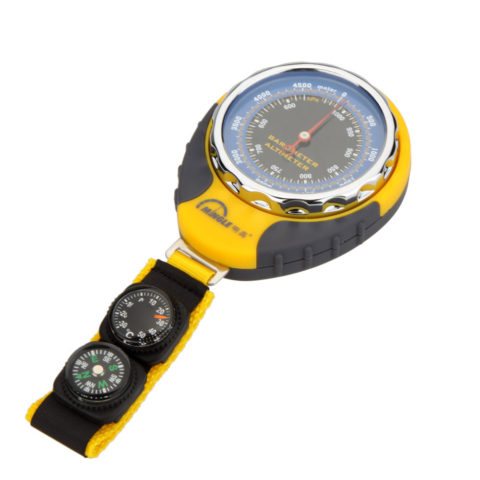
Barometer - shows pressure, altimeter - measures altitude at sea level - Frame. When choosing a compass for hiking, consider where and how it is most convenient to carry it. Closed-case models are large and heavy. Tablets have a built-in magnifying glass and a lanyard for fastening. Compact ones are worn on the finger and are often used in competitions. Models worn on the wrist are suitable for cyclists.
- Clinometer. This element is in the engineering compass. Allows you to determine the angle of inclination for designing earthworks. Tourists don't need it.
Only a correctly chosen compass for the forest, tourism or competitions will become an indispensable assistant and ensure safety.
Attention! When purchasing, pay special attention to the absence of the effect associated with the magnetization reversal of the hands.
Helpful Tips:
- check serviceability before making the final choice and going into the forest;
- After stopping work, secure the pointer with the brake;
- Keep away from metal objects, speakers and mobile phones.
Gyroscopic type compass
In short, a gyrocompass is a device that indicates the poles on the surface of the earth and water. The device consists of one or more gyroscopes. It is an integral part of navigation systems on ships. If you compare this compass with a regular magnetic one, it always points to the true North Pole, not the magnetic one.
The device can be used as a navigation device, so it is installed in the steering system on marine vessels. It will also be useful if you need to determine the exact direction when aiming the guns of warships. Speaking of marine gyrocompasses, they are very heavy. The weight of some of them exceeds 25 kilograms.
Magnetic inclination
In fact, the last drawing may seem a little strange. Why, being in a horizontal state, does the sensor show almost the maximum value along the Z axis?? The situation is repeated if we tilt the device, for example, with the X axis down, and again we get the maximum value (left circle). It turns out that the sensor is constantly affected by a field directed through the sensor down to the surface of the earth!
There's really nothing unusual about this. This feature of the earth's magnetic field is called magnetic inclination . At the equator, the field is directed parallel to the earth. In the southern hemisphere - up from the earth at a certain angle. And in the northern hemisphere, as we have already observed, downward. Let's look at the picture.
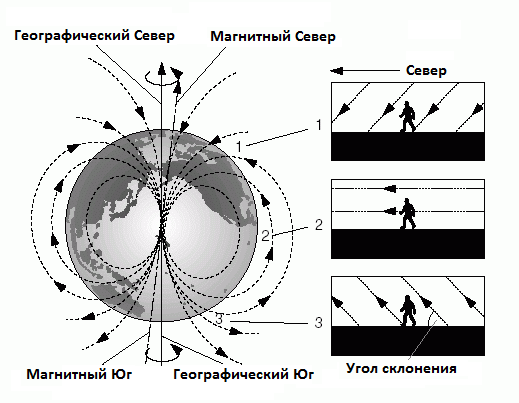
Magnetic inclination will not prevent us from using a compass in any way, so we won’t think too much about it, but just take note of this interesting fact.
Now let's move on directly to the problems.
Interesting Facts
When using a compass, it is always worth remembering that its arrow does not point strictly north. It often deviates because the location of the geographic poles does not coincide with the magnetic ones. When used in aviation, the device is only able to indicate the correct heading if the aircraft is moving in a straight line. When a plane flies, for example, from America to Europe, throughout the rest of the flight the pilots are coordinated by dispatchers using messages.
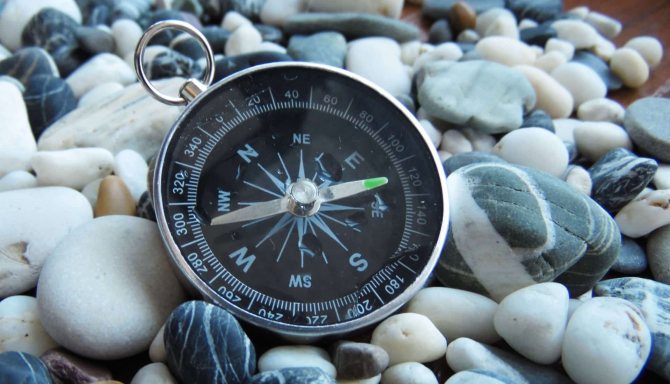
Automatic calibration
It must be said that manually obtaining accurate minimum and maximum magnetometer readings is not an easy task. For this procedure, at a minimum, you will need a special stand in which one of the axes of the device can be fixed.
It is much easier to use the automatic calibration algorithm. The essence of this method is to approximate the cloud of obtained points by an ellipsoid. In other words, we select the parameters of the ellipsoid in such a way that it matches as accurately as possible with our cloud of points constructed based on magnetometer readings. From the parameters selected in this way, we can obtain the displacement value, scale factors and coefficients for orthogonalizing the axes.
You can find several programs suitable for this on the Internet. For example, MagCal, or another one - Magneto. Unlike MagCal, in Magneto the calculated parameters are output in a ready-to-use form, without the need for additional transformations. This is the program we will use. The main and only form of the program looks like this:
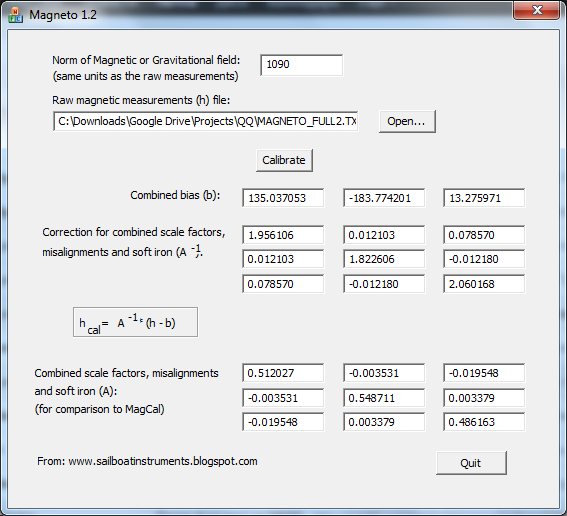
In the “Raw magnetic measurements” field, select the file with the source data. In the “Norm of Magnetic or Gravitational field” field, enter the value of the Earth’s magnetic field at the point of our dislocation. Considering that this parameter does not in any way affect the deflection angle of the needle of our virtual compass, I set the value to 1090, which corresponds to a value of 1 Gauss.
Then click the Calibrate button and get:
- offset values for all three axes: Combined bias (b);
- and the scale and orthogonalization matrix: Correction for combined scale factors, misalignments and soft iron (A-1).
With the help of a magic matrix, we will eliminate the flattening of our cloud and eliminate its slight rotation. The general calibration formula is as follows:
Vcal = A-1 * (V - Vbias)
where Vcal is the vector of calibrated magnetometer values for three axes; A-1 —scale and orthogonalization matrix; Vbias is the displacement vector along three axes.
Modern types of compasses
In the modern world, there are several types of compasses, namely:
- radio compass A device equipped with a direction finder;
- electromagnetic compass. As mentioned above, there is an electric generator installed inside it, which is necessary to drive the magnetic field;
- electronic compass. Indicates the four cardinal directions. It can be found as an application, so even a child can install it on their smartphone or tablet;
- gyro-compass. The most geographically accurate device.
Varieties
As already mentioned, there are pointer and liquid instruments that operate on a magnetic base. Models of the first type are most often used. These are hand-held, portable devices that use a thin magnetic needle. It is freely located at the midpoint relative to the vertical axis and moves horizontally without obstacles. The end of the arrow on the northern part is marked, and a coil is installed in coaxial alignment with it. During the measurement process, the device can be held in hands or on a special tripod base.
The liquid magnetic compass is provided by a floating sensing element. It has a more accurate measurement principle compared to its analogue. Such instruments are also called ship instruments, as they are used by seafarers. The designs of liquid compasses are varied. The classic version is a so-called “bowler” with an aluminum coil fixed on a vertical axis. Pairs of magnets are fixed on different sides relative to it, and in the central part there is a float. Depending on the forces that compensate for pressure or temperature, the liquid passes into the mating chamber, controlling the readings of the device.
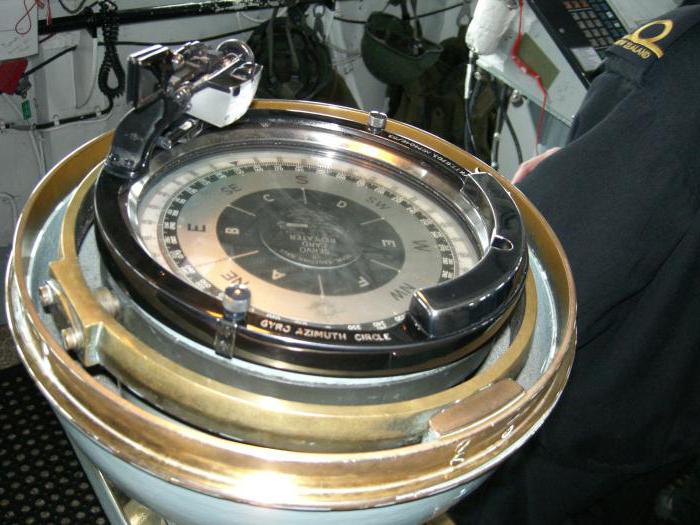
Modern devices
Nowadays, despite the advent of satellite navigation and gyrocompass, an ordinary magnetic compass continues to serve people faithfully. Of course, modern devices bear little resemblance to their medieval predecessors. They are made using the latest technologies and materials.
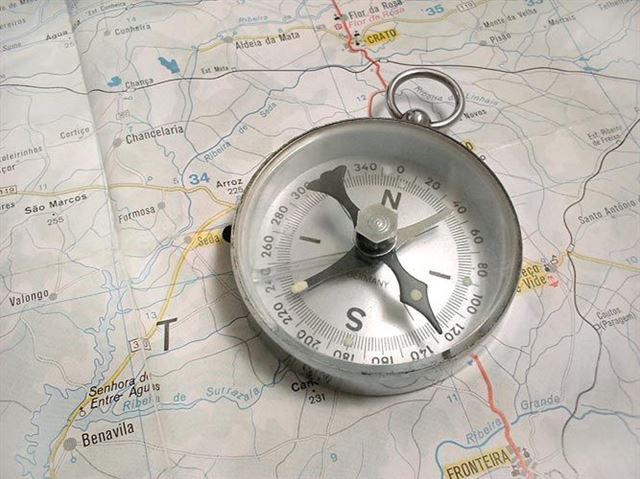
Today, an ordinary magnetic compass is most often used by tourists, geologists, climbers, travelers and simply lovers of excursions and hikes. Ships and planes have long been using other, more advanced devices. An electromagnetic compass that eliminates interference from the metal hull of a ship, a gyrocompass that accurately points to the geographic pole or satellite navigation devices.
But of all the instruments that indicate the direction and cardinal directions, a regular compass is the simplest and most unpretentious. It does not require electricity, it is simple, convenient and reliable. And he will always point you in the right direction to a safe harbor.
